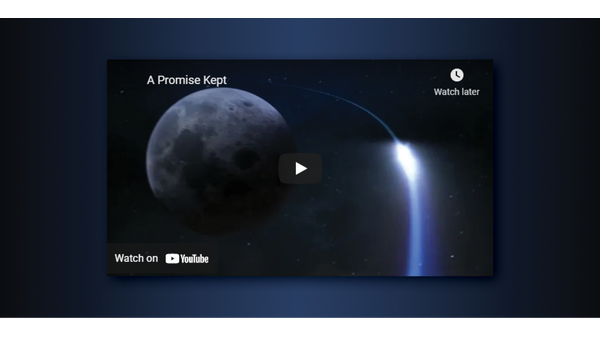Opening the Final Frontier
Space really is the final frontier. Since Star Trek first crossed TV screens in 1966, we have believed that humanity’s destiny lies among the stars. And in the third decade of the third millennium, we are closer to that dream than ever before. Today, after decades of imagining the future, enterprising companies in partnership with governments are putting into place the practical foundations and critical components of a thriving space economy reaching from LEO to cislunar space. MORE
Podcast
Every Monday during the Opening the Final Frontier campaign, you’ll get to listen to a new podcast featuring experts on a wide variety of topics, including cislunar travel, refueling in space, the role of spaceports, handling orbital debris and more!.
Opening the Final Frontier: We’re There. Now What? – Episode 5 – The Top 3 CIS-Lunar Opportunities & Why They Will Transform Commercial Space
The fifth episode of this series is based on October’s edition of the New York Space Business Roundtable. The episode features a conversation with multiple experts about cislunar opportunities and commercial space.

Speakers include:
- Hussain Bokhari, Senior Analyst, NSR (an Analysys Mason company)
- Negar Feher, Chief Revenue Officer, SpaceRyde
- Holly Shorrock, Intelligence Analyst, Office of Intelligence and Analysis Economic Security Mission Center at the U.S. Department of Homeland Security (DHS)
- Matthew Taylor, Associate Director, Environmental Intelligence and Civil Space, Raytheon Intelligence & Space
Opening the Final Frontier NOW
The Orbiter: Opening the Final Frontier
A live conversation focusing on what’s next from the companies with operational launchers, leading-edge developments and ambitious plans – and how they may grow economic opportunity for rest of the world.
An SSPI-WISE panel session, conducted on November 17, featuring women from a variety of careers in the launch side of space and satellite.
Videos
The Better Satellite World campaign shows the world why our industry, though often invisible, is indispensable to modern life, through powerful stories and videos that depict space and satellite technologies contributing to the economy, society and sustainability of planet Earth. Several of our Better Satellite World videos, as well as many released by Virgin Orbit, focus on the topic of the future space economy, how we get there and what challenges we may face along the way.
Coming Up Next
Thank you for joining us for Opening the Final Frontier!
News
Loss of 38 satellites prompts call for better space weather forecasts – The Washington Post – November 19
SSPI Launches Opening the Final Frontier, a Multi-Week Online Exploration of the Space & Satellite Industry’s Journey Toward a Future Space Economy – October 24, 2022
U.S. military waiting for industry to demonstrate space transportation concepts – SpaceNews – October 17, 2022
Cornwall space launch centre is a big deal for UK space tech post Brexit – Cornwall Live – October 17, 2022
Space Sustainability: NASA Funds Projects to Study Orbital Debris – SciTech Daily – October 15, 2022
Virgin Orbit, Spire Global Sign Multilaunch Agreement – Virgin Orbit – October 12, 2022
Virgin Orbit Announces ‘Start Me Up’ Mission as Flight Hardware Takes Off for Spaceport Cornwall Launch Debut – Virgin Orbit – October 11, 2022
Firefly says Alpha launch a success despite payload reentries – SpaceNews – October 10, 2022
FCC approves new orbital debris rule – SpaceNews – September 29, 2022









